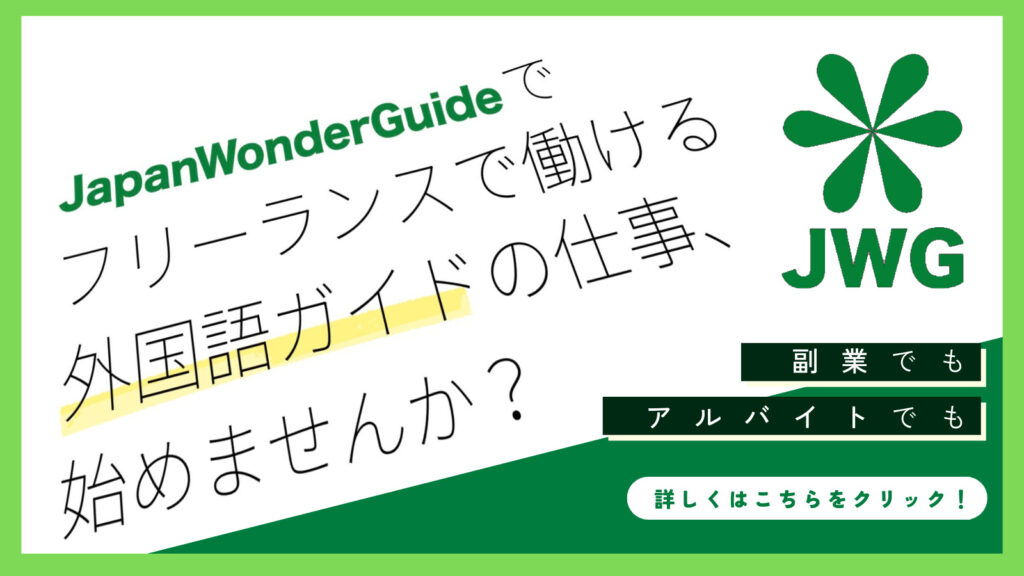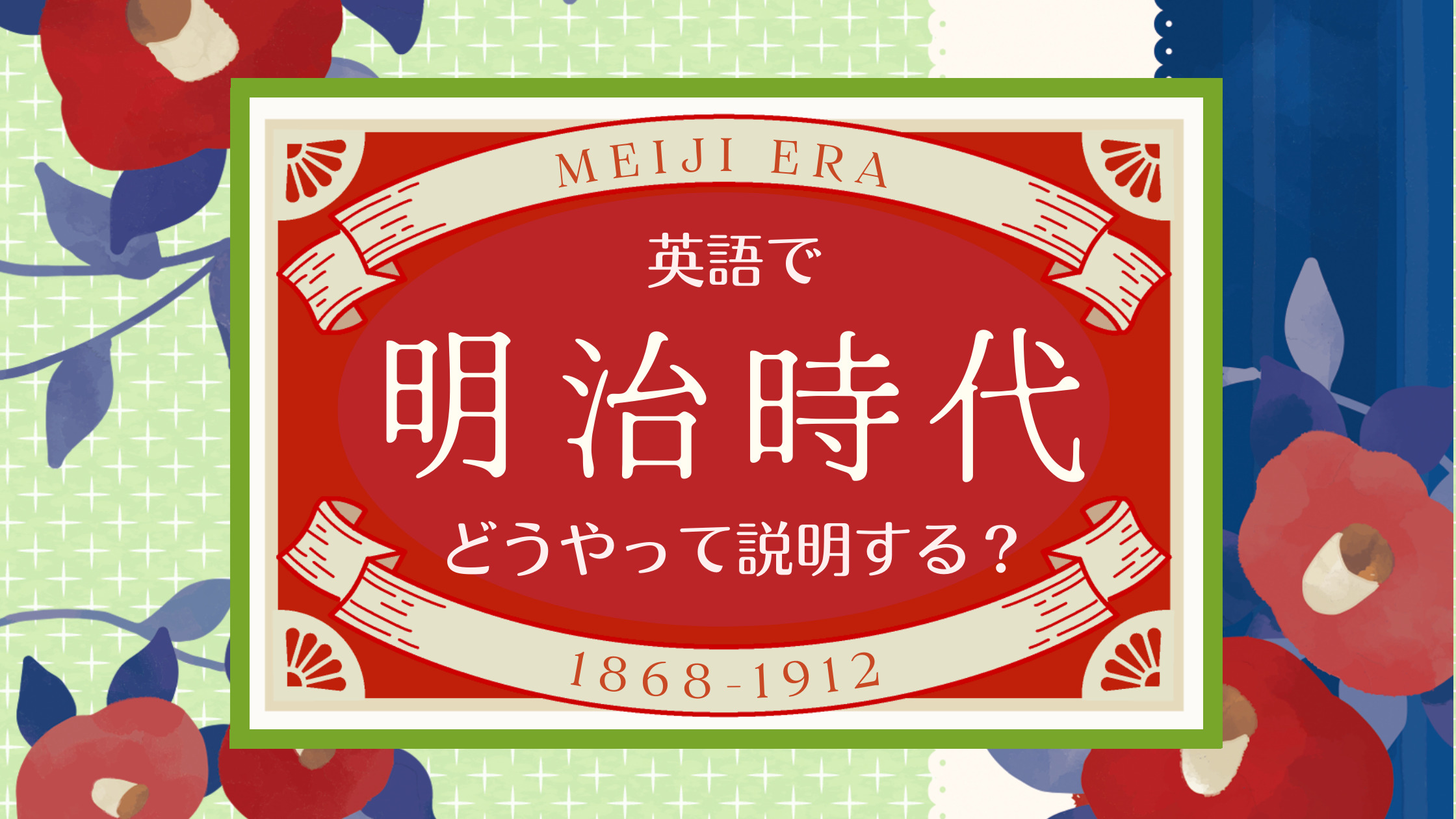漠然と昔の日本に興味を持つ外国人はいても、明治時代について知っている外国人は少ないのではないでしょうか。
ツアー中、建築の説明などで明治時代のことを話すときや、歴史に興味がある方に質問された時に答えることができるよう、今回は、明治時代について英語で説明する際に使える表現をまとめました。
英語の記事:


【この記事を書いているのは…】
凡人
Webライター/ブロガー 高校時代の海外旅行がきっかけで英語に興味を持つ。大学時代には10ヵ国を旅し、TOEIC870点を取得。6年間の英語講師経験あり。現在は英語特化型のWebライターとして活動中。自身でもWebメディア「#オンライン英会話のある生活」(https://bonjinblog.com/)の運営を行っている。
Twitter:https://twitter.com/bonjineikaiwa
「明治時代」の概要を簡単に英語で説明しよう
「明治時代」の概要を英語で説明する際に使う英語表現をまとめました。
Meiji is the name of a period in time in Japanese history that started in 1868 with the Meiji Restoration and lasted until 1912.
明治時代は、1868 年に明治維新で始まり、1912 年まで続いた日本の歴史の期間の名前です。
It is often described as the time when Japan took ‘its first step to modernization through the reformation of the fundamental systems of the nation based on interactions with other countries.
明治時代は、日本が外国との交流に基づいた体制の改革によって、近代化への第一歩を踏み出した時期としてしばしば説明されます。
New technologies and cultures were introduced to Japan, which helped the country to develop as a strong nation that held influential power in the international world.
日本に新しい技術や文化が導入され、国際社会で影響力を持つ強国として発展しました。
It also led them to several battles with countries that later had a significant influence on their future.
それらの発展は、後に日本の将来に大きな影響を与えることとなる、いくつかの戦争にもつながりました。
Meiji Restoration 明治維新 / modernization 近代化 / reformation 改革 / strong nation 強国 / lead to につながる
「明治維新」を英語で説明しよう
「明治維新」を英語で説明する際に使う英語表現をまとめました。
Before we start to learn about the Meiji period, let’s take a brief review back to the Edo period.
明治時代について学び始める前に、江戸時代を簡単に振り返ってみましょう。
The Edo period lasted over 260 years from 1603 and 1868, when Japan was under the rule of the Tokugawa Shogunate.
江戸時代は日本が徳川幕府の支配下にあった1603年から1868年までの260年以上続きました。
The Tokugawa Shogunate adopted Sakoku, the policy of national isolation that allowed limited international trade only with the Netherlands and China.
徳川幕府はオランダと中国との限定的な国際貿易を許可する鎖国を採用しました。
The Tokugawa Shogunate started to lose power and authority, which resulted in the collapse of it in 1867.
徳川幕府は権力と権威を失い始め、その結果、1867年に幕府は崩壊しました。
After the collapse of the Tokugawa Shogunate, the new government started to establish a series of new policies aiming to unify the country under the authority of the emperor again.
徳川幕府が崩壊すると、新政府は再び天皇の権威のもとに天下統一を目指す新しい政策を次々と打ち出していきました。
During the Edo period, people were classified into four classes, and Samurai was considered the highest one. After the Meiji Revolution, the samurai lost their privileges, and their dissatisfaction with the government resulted in several civil wars such as the Satsuma Rebellion in 1877.
江戸時代、人々は4つの階級に分類され、武士はその最高位とされていました。明治維新後、武士は特権を失い、政府に対する不満から、1877年の西南戦争などいくつかの内戦を引き起こしました。
The feudal clans were also asked to return their domains in order to create a centralized nation with a new administrative unit, now known as “prefectures”.
また、藩は領地の返還を求められ、中央集権国家を作るために、現在「府県」と呼ばれる新しい行政単位が設けられました。
Meiji Restoration 明治維新 / modernization 近代化 / reformation 改革 / strong nation 強国 / lead to につながる
「明治時代」の文化を英語で説明しよう
「明治時代」の文化を英語で説明する際に使う英語表現をまとめました。
This new period opened the gateway to the world for Japan with a number of introductions of new technologies and cultures.
この新しい時代は、多くの新しい技術や文化が導入され、日本にとって世界への門戸が開かれました。
It included Western clothing, hairstyles, food cultures, and new entertainment forms. In addition, the Solar Calendar was introduced, replacing the lunar calendar which was used over 800 years in Japan.
この新しい時代には、洋装、ヘアスタイル、食文化など新しいエンターテインメントの形が導入されました。また、日本で800年以上使われてきた太陰暦に代わり、太陽暦が導入されました。
The construction of railways was also implemented rapidly, drastically changing the way of the public transport system in Japan. In addition, a new architectural style was adopted, characterized by using of (red) brick and stone as construction materials, instead of traditional wood. The intention was not only to copy western structures but also to prevent fires.
また、鉄道の敷設も急速に進み、日本の公共交通機関のあり方を大きく変えました。また、建築材料も従来の木造から、(赤)レンガや石を使った新しい建築様式が採用されました。これは、西洋の建築物を真似るだけでなく、火災を防ぐという目的もありました。
A modern educational system was also introduced according to the proclamation of Gakusei in 1872, based on the educational system in Europe. It stipulated the elementary school education as compulsory, and aimed to provide the equal opportunity for citizens regardless of class or gender.
1872年の学制発布により、ヨーロッパの教育制度にならった近代的な教育制度が導入されました。小学校の義務教育が規定され、階級や性別に関係なく、国民に平等な機会を与えることを目指しました。
open the gateway to the world 門戸が開かれる / lunar calendar 太陰暦 / solar calendar 太陽暦 / implement 実行する / drastically 徹底的に / stipulate 規定する / compulsory 義務
まとめ
明治時代について英語で説明する際に使える表現をまとめました。
外国人に対して明治時代について英語で説明する機会があるときは、ぜひこの記事で紹介した表現を使ってみてください。
あわせて読みたい
英語を活かして外国人ゲストをおもてなし!

- 日本の魅力を外国人に紹介したい
- 英語や語学を活かした仕事がしたい
- 人を喜ばせることが好き
そんな方にぴったりな仕事が通訳案内士やツアーガイドのお仕事です。
通訳案内士(ツアーガイド)は、一緒に街を歩いて、地域の歴史や文化をお話しながら、外国人ゲスト一人一人の旅が素敵なものになるようお手伝いします。
ガイドの印象によって、日本の印象が決まると言っても過言ではありません。
人を楽しませることが好きで、日本の魅力を世界に伝えたい!という情熱をお持ちの方は、ツアーガイドを目指しませんか?

JapanWonderGuide(JWG)は「日本のガイドの質を世界一に」をスローガンに掲げるガイドコミュニティです。
2020年から活動を開始し、全国通訳案内士等を中心に、現在は、3,800名を超えるコミュニティとなっております。
JWGの有料会員(Knottist, ノッティスト)にご登録いただくと、月額1,000円(税込1,100円)で、
ガイディングやビジネスに活きる知識・スキルが身につく研修動画、E-Learningが見放題!有料コンテンツを無料でご視聴いただけます。
そのほか、人気観光施設の最新情報や裏話をお届けするJWG Live!の見逃し配信、各研修の割引などをご利用いただけます。
さらに、有料、無料会員ともに研修やイベント情報など、ガイドに役立つ内容がたっぷり詰まったメルマガを月に2回お届けします。
また、ガイド仲間を見つけ、交流できるFacebookグループにもご招待!情報交換の場としてお使いください。
【JWG会員でできること】
| Knottist Free | Knottist | Knottist+ | |
| 料金 | 無料 | 月額1,000円 (税込1,100円) | 年間14,000円※ (税込15,400円) |
| 期間 | 無期限 | 毎月自動更新 | 2026年8月31日まで |
| ①メンバー限定Facebookグループご招待 | ○ | ○ | ○ |
| ②メンバー向けメルマガ受信 | ○ | ○ | ○ |
| ③JWG Live!見逃し配信 | △ | ○ | ○ |
| ④JWG主催研修割引 | – | ○ | ○ |
| ⑤JWG交流会へご招待 | 有料 | 無料 | 無料 |
| ⑥通訳案内研修 | – (3,500円) | 無料 | 無料 |
| ⑦JWG動画配信 | 有料 | 無料 | 無料 |
| ⑧通訳ガイド保険 | – | – | ○ |
※Knottist+の会費は加入月によって変動します
JWGでは、ガイドのスキルアップを目指す方や、ガイドに挑戦したい新人ガイドさん、
ガイドに興味のある方を全力サポートいたします!
「学校の合間に」「週末だけ」
JapanWonderGuideと一緒に、「ツアーガイド」の世界の扉を開きませんか?






